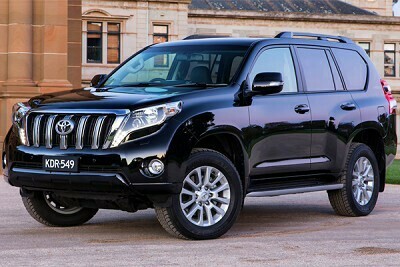Sindh’s Motor Vehicle Fees Outpace Agriculture Income Tax
The Sindh government anticipates collecting Rs9.35 billion in motor vehicle registration charges for the current fiscal year, concluding on June 30, 2025. Budget documents indicate that this sum exceeds twice the Rs4 billion expected from income tax levied on the province’s extensive agriculture sector.
These statistics underscore a persistent economic disparity, revealing that individuals in the middle and upper agriculture income brackets, along with the rural elite, exhibit substantial lifestyle spending. However, their tax contributions remain notably low. This dynamic has increased the tax burden on compliant industrial and service sectors, as well as salaried individuals outside the agriculture sector.
The provincial administration is poised to generate comparatively greater revenue from motor vehicle registration fees, despite the lower tax rates, which range from 1% to 5% of a vehicle’s value, contingent on engine size.
Conversely, agricultural income faces considerably higher tax rates, spanning from 15% to 45%, effective January 1, 2025. Furthermore, a super tax ranging from 1% to 10% is imposed on elevated agricultural incomes, while corporate farming encounters tax rates between 20% and 29%.
Agriculturists’ Contribution to Provincial Tax Revenues Remains Minimal
During the initial six months of FY25 (July–December), the applicable agriculture income tax fluctuated from 5% to 15%. Nevertheless, agriculturists’ contributions to provincial tax revenues remain disproportionately small.
Agriculture constitutes a substantial income source for nearly half of the province’s total population (55.7 million), encompassing rural inhabitants, including underprivileged farmers, landowners, individuals, and businesses involved in large-scale agricultural production and livestock.
Muhammad Abrar Polani, an auto analyst at Arif Habib Limited, approximates that approximately 40% of all vehicles sold nationwide are purchased by individuals residing in rural areas.
Around 40% of total vehicles sold in Sindh are bought by people living in the province’s rural regions.
Additional analysts have observed peak car purchasing in rural areas during winter and summer crop harvesting periods, as well as around Eid-ul-Adha, when farmers primarily vend livestock in urban centers.
Hamdan Ahmed, an auto analyst at Optimus Capital Management, noted in a recent analysis that the agriculture season and Public Sector Development Programme (PSDP) spending stimulated increased sales volumes of passenger cars, SUVs, and LCVs in May 2025.
Auto sales (excluding tractors, buses, and two/three-wheelers) demonstrated a 38% year-on-year improvement, reaching 15,396 units in May, which was “bolstered by the easing of highway closures following canal protests, PSDP spending in the final months of FY25, and the wheat harvest, despite pre-budgetary expectations.”
Deeper Realities Revealed by the Numbers
The persistent low collection of income tax from agriculture, despite the increasing number of cars in rural Sindh, reveals a more profound narrative within the province’s fiscal data: wealth visible on roads is not adequately reflected in tax contributions.
Recent estimations indicate that agriculture accounts for roughly 23.54% of Pakistan’s gross domestic product in FY25, but its contribution to tax revenue remains around 1%. Given that agriculture income tax falls under provincial jurisdiction, Federal Finance Minister Muhammad Aurangzeb conveyed that provinces have enacted legislation for income tax on agriculture, anticipating a considerable surge in collections for the upcoming fiscal year starting July 1, 2025.
Contrary to Aurangzeb’s forecast, the Sindh government aims to collect Rs8 billion in income tax from agriculture in the next fiscal year (FY26), commencing July 1, 2025. This target remains modest when compared to the Rs9.35 billion expected from motor vehicle registration fees in both the current FY25 and the approaching FY26.
All four provincial administrations have recently legislated agriculture income tax, aligning with the federal government’s commitment to the International Monetary Fund (IMF) to elevate tax collection to Rs14.307 trillion (10.7% of GDP). However, the Sindh government voiced disapproval of the federal government’s commitment, asserting that it should have consulted the provinces beforehand.
The agriculture income tax is predicted to inflate the cost of agricultural products, as sector participants may transfer the tax impact to end-consumers, it has been suggested.
A significant portion of the motor vehicle registration fee originated from the passenger car, SUV, and LCV segments, according to Sindh’s Excise, Taxation, and Narcotics Control Department, which levies the fee within the 1% to 5% range of a vehicle’s value. The department records minor collections from tractor registrations at Rs2,000 per unit, and motorcycles in the 0.5% to 2% range of the two-wheeler’s value.



Comments (0)
No comments yet. Be the first to comment!
Leave a Comment